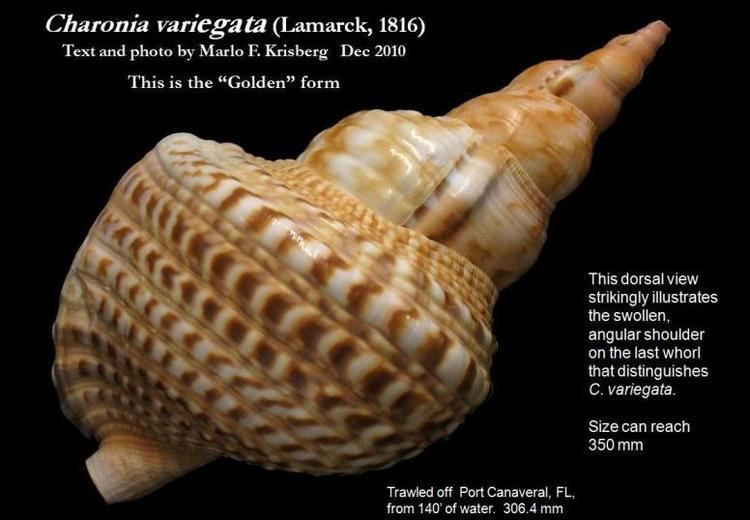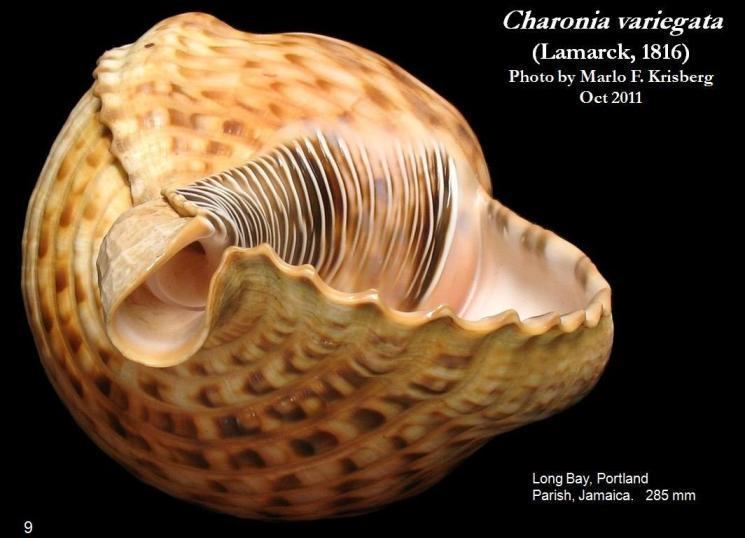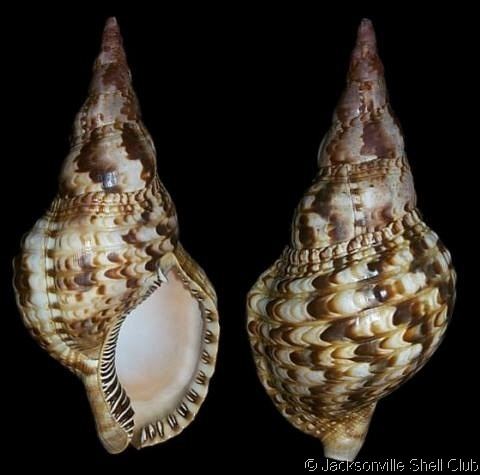Superfamily Tonnoidea Subfamily Cymatiinae Scientific name Charonia variegata Rank Species | Family Ranellidae Genus Charonia | |
 | ||
Similar Charonia, Charonia lampas, Ranellidae, Cymatium, Charonia tritonis | ||
Triton s trumpet charonia variegata
Charonia variegata, the Atlantic triton or Atlantic triton's trumpet, is a species of predatory sea snail, a marine gastropod mollusk in the family Ranellidae, the triton snails, triton shells, or tritons.
Contents
- Triton s trumpet charonia variegata
- Charonia variegata eating start
- Distribution
- Description
- Habitat
- References

Charonia variegata eating start
Distribution

This species has a wide distribution. It has been found in European waters, the Mediterranean Sea, in the Atlantic Ocean along Cape Verde, off the Canary Islands, North West Africa, and Tanzania, in the Caribbean Sea and the Gulf of Mexico, and from North Carolina to eastern Brazil.
Description

The shell size varies up to 375 mm. The maximum recorded shell length is 374 mm. This conical shell has an elongated and sharply pointed spire without any knobs, but somewhat squatter than the spire of the Pacific Charonia tritonis. The lower whorls are unevenly swollen with a varix and bulge over the suture. The suture then descends in an uneven spiral. The parietal callus is lined with a narrow, dark inner lip, covered with regularly spaced, brown, rib-like plicae. The outer lip is scalloped but less projected and toothed with about 10 pairs of rib-like teeth superimposed on square, dark brown blotches. The color of the shell is mottled in shades of creamy white to yellow with brown markings. The inside of the large aperture is orange pink, and the interior is white.
The species is highly variable and does not have any known geographic subspecies.

The veliger larvae have a period of pelagic development of more than three months, drifting in the trans-Atlantic currents. These larvae are the largest known of any Cymatiidae in the Atlantic; the larval shell reaches 5 mm when fully developed.
Habitat

Minimum recorded depth is 0.3 m. Maximum recorded depth is 110 m.
Thin-shelled 'crabbed' examples have been found in traps off the west coast of Barbados at depths around 500-600 ft.

